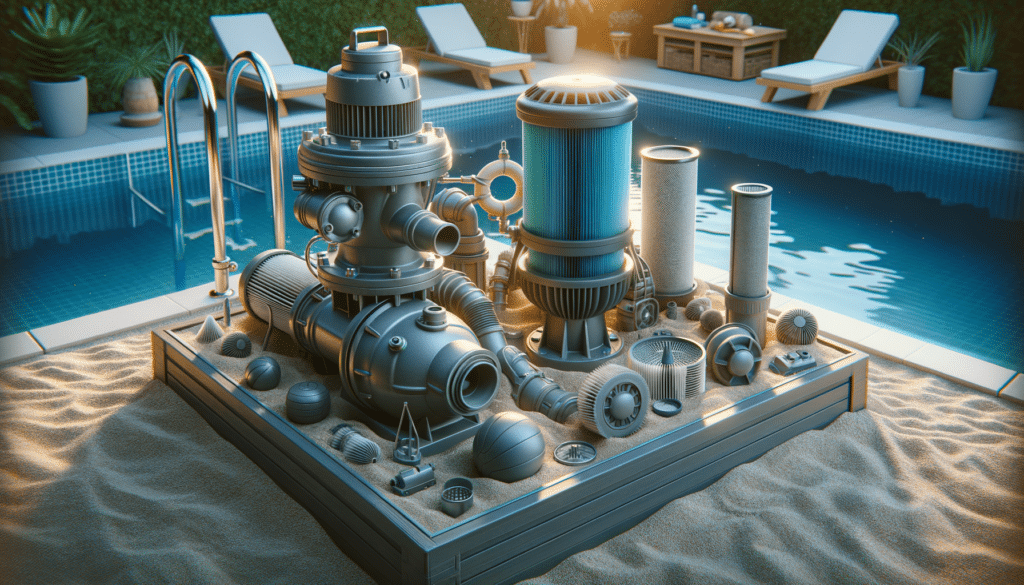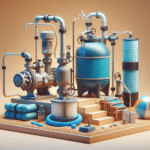Understanding Pool Pumps and Filters
Pool pumps and filters are crucial components in maintaining the cleanliness and clarity of your swimming pool. The pump is responsible for circulating water through the filter, which removes debris and impurities. This dynamic duo ensures that your pool remains a safe and enjoyable place for swimming. Understanding how these two elements work together is essential for anyone looking to maintain a pool.
There are various types of pool pumps, including single-speed, dual-speed, and variable-speed pumps. Single-speed pumps operate at a constant speed, making them less energy-efficient compared to their counterparts. Dual-speed pumps offer a low and high setting, providing some flexibility in energy consumption. Variable-speed pumps, however, are among the top options for energy efficiency, as they allow precise control over the pump’s speed.
Filters come in three main types: sand, cartridge, and diatomaceous earth (DE). Sand filters use specially graded sand to trap particles, and they are known for their durability and ease of maintenance. Cartridge filters use a paper-like material to filter out debris and generally require less water for cleaning. DE filters offer exceptional quality in water clarity, using a fine powder to capture even the smallest particles.
- Single-speed pumps: Constant operation, higher energy consumption
- Dual-speed pumps: Offers two speed settings for flexibility
- Variable-speed pumps: Energy-efficient with adjustable speeds
- Sand filters: Durable and easy to maintain
- Cartridge filters: Efficient in water usage
- DE filters: Provides the finest filtration
Choosing the right combination of pump and filter depends largely on the size of your pool and your specific needs. A larger pool may benefit from a variable-speed pump and a DE filter for optimal performance and cleanliness.
The Role of Pool Filter Sand
Pool filter sand plays a vital role in the filtration process of sand filters. This specially graded sand is designed to trap particles and debris as water flows through it. The sand’s unique properties make it an effective medium for maintaining clear pool water.
When selecting pool filter sand, it’s important to choose a product specifically designed for pool filtration. This sand is typically made from silica, which has angular grains that effectively capture particles. The sand’s size and shape are crucial, as they determine the efficiency of the filtration process. Regular play sand or other types of sand are not suitable for pool filters, as they lack the necessary properties.
Over time, the sand in your filter can become worn and less effective at trapping debris. It’s recommended to replace the sand every 3 to 5 years, depending on usage and the pool’s environment. Signs that your filter sand needs replacement include cloudy water, increased backwashing frequency, and reduced water flow.
- Silica sand: Angular grains for effective filtration
- Replace every 3-5 years: Maintain efficiency
- Signs of replacement: Cloudy water, frequent backwashing
Regular maintenance and timely replacement of pool filter sand can significantly enhance the performance of your sand filter, ensuring that your pool remains clean and inviting.
Setting Up Your Pool Equipment
Proper pool equipment setup is essential for optimal performance and longevity of your pool system. Whether you’re installing a new pool or upgrading existing equipment, understanding the setup process can save time and prevent costly mistakes.
Start by planning the layout of your pool equipment, considering factors such as accessibility, space, and local regulations. Ensure that your pump and filter are installed on a stable, level surface to prevent vibrations and potential damage. It’s also important to have adequate ventilation around the equipment to prevent overheating.
When connecting the pump and filter, follow the manufacturer’s instructions carefully. This typically involves connecting the pump to the pool’s skimmer and main drain, and then routing the water through the filter before returning it to the pool. Pay attention to the direction of water flow, as incorrect connections can lead to inefficient filtration and potential damage.
- Plan layout: Accessibility and space considerations
- Stable surface: Prevents vibrations and damage
- Follow instructions: Ensure correct water flow direction
Regular maintenance is crucial to keep your pool equipment running smoothly. This includes checking for leaks, cleaning the filter, and ensuring that the pump is operating efficiently. By taking the time to set up and maintain your pool equipment properly, you can enjoy a clean, safe, and relaxing swimming environment.


